 Written by guest blogger, Elena Cremonese, Archives Technician
Written by guest blogger, Elena Cremonese, Archives Technician
We often turn to historical records to learn from the past, but it rarely feels as direct and prescient as today, when we can turn from an unprecedented global pandemic to look to…an earlier unprecedented global pandemic. We’ve had so many researchers reaching out to us about this over the past year, so I’ve spent some time searching through the Halifax Municipal Archives’ holdings to see what material we had related to the 1918-1920 Spanish Flu.
The Spanish Flu arrived in Nova Scotia in September of 1918, and, after a couple of waves, disappeared in May 1920. Without a strong response from the federal and provincial governments, much of the response to the pandemic was left to the municipal government – including doctor and Mayor of Halifax Arthur C. Hawkins, and Dr. Norman E. McKay, Chairman of the Board of Health for Halifax and Quarantine Officer for the Port of Halifax, as well as the public health officer for Nova Scotia, Dr. William H. Hattie.[1] After sending assistance to Massachusetts and receiving a report about the influenza, they put measures in place that may be familiar to us today – such as a lockdown of all public places, including schools, universities, theatres, and churches.
Looking for records about the Spanish Flu quickly became an exercise in frustration, and a reminder of the ways in which archival research takes time, patience, and creativity. Keyword searches in the Archives’ database for “Spanish Flu,” “influenza,” and just “flu” turned up absolutely nothing. After a general database search, my next step is always the council minutes for the former municipalities, which are digitized and searchable online, opens a new window.
I thought that surely the city councils of Dartmouth, the City of Halifax, and Halifax County would have discussed such an important epidemic at length! But my initial searches, using the same key words, turned up very little. Certainly not the pages and pages of discussion that I had anticipated finding. Even the Annual Reports for Dartmouth and Halifax, opens a new window gave little detail aside from some hospital account info, though the Dartmouth School Board report in the 1919 annual report did include this passage: “Scarcely were we again readjusted in these latter buildings with double sessions when the Influenza epidemic closed us down for six weeks. But that was not all. The attendance at the re-opening after the ‘Flu’ was not half the normal, while many pupils in the more advance grades had left school permanently.”
In part this was because I was missing something pretty important. At the time of the Spanish Flu, the City of Halifax was governed more by the Board of Control than City Council. The Board of Control, which was established in 1913 through a process of civic reform, became the executive committee of Council, so while there are Council minutes for the years the Board was in existence (1913-1919), the primary decision-making happened in the Board of Control meetings.
It is in these meeting minutes, opens a new window, we see some of what was happening in Halifax as the Spanish Flu pandemic grew.
These minutes do give some hints as to where else it might be worth looking. For instance, a report from the Committee on City Prison submitted to Controllers in December of 1918 led me to the Committee on City Prison records, opens a new window. While I did learn some interesting facts–there was a prison break!–I didn’t find anything specifically about the Spanish Flu.
The other obvious source is the municipal Boards of Health. Again, however, I came across a road block. Though the County of Halifax’s Board of Health, opens a new window was established in 1911, the Municipal Archives only has records from 1940 onwards. The Dartmouth Board of Health, opens a new window wasn’t established until 1935.
For the City of Halifax, we do have registers of infectious disease cases from the Board of Health, opens a new window. The lists include the following patient information: name, street address, disease, results, fumigation, school, and general remarks, and include small pox, scarlet fever, tuberculosis, and some instances of “influenza” or “flue.”
There is a gap in the Halifax Board of Health minutes, opens a new window from 1870-1920, so we only have the minutes from the tail end of the pandemic, where the minutes show discussion over which hospitals the Board of Health may be able to use as infectious disease hospitals as needed.
This type of information, combined with later Board of Health minutes and the Tuberculosis Hospital records, opens a new window show the legacy of the Spanish Flu, and the ways in which provincial and municipal governments began to concern themselves with the prevention of disease.
Since we found in the Board of Control minutes that the Board of Health wanted to close schools for a period of time, I checked the Halifax Board of School Commissioners minutes. These minutes are an especially valuable resource because they are typically quite detailed.
For instance, there are several entries pertaining to the Board of Health’s request to use the Oxford School as an Infectious Diseases Hospital.
Ultimately, sometimes a search of the archival records here at the Municipal Archives leads to records at other places, such as the Nova Scotia Museum’s virtual exhibit on the pandemic, opens a new window and Allan Marbles lecture, opens a new window on the Spanish Flu in Nova Scotia.
Both of these sources rounded out some of my knowledge of not just what happened, but who was in charge of handling the response to the pandemic in Nova Scotia. Halifax Mayor Arthur C. Hawkins was a doctor and the coroner for Halifax County, and likely understood the severity of the outbreak better than most. Unfortunately our records for the Halifax Mayor’s office, opens a new window only begin at 1922, and the correspondence we have does not include any letters about the Spanish Flu.
Since the Board of Health minutes are missing from this time period, and they appear to be the records that would give us the most complete picture of how and why decisions were made regarding the Spanish Flu in Halifax, Dartmouth, and the County of Halifax, we must turn to other historical sources. The Board of Health needed to get the word out about the severity of the pandemic, what measures to follow, and let people know when there was going to be a lockdown. Unlike today, where we have the benefit of live press conferences and up-to-the-minute news on our phones, this information was predominantly communicated by newspaper in 1918-1920.
For instance, Dartmouth Council on January 31, 1922 notes “Bulletins received from Provincial Health Officer re prevention of influenza. Clerk authorized to have same published in Dartmouth Patriot as news.” Unfortunately, the Archives doesn’t have submissions to Dartmouth Council from this time period, but the Nova Scotia Archives and the Halifax Public Libraries do have historical newspapers. HPL has given a glimpse into some of these newspaper stories and bulletins in their earlier blog post on the Spanish Flu, opens a new window.
Looking for Spanish Flu records in the Halifax Municipal Archives was an exercise in the kind of patience often needed to do archival research, and a reminder that you’re never going to find everything you need in one place. Very few complete records have survived from that time period, though we are always looking for additions to our holdings.

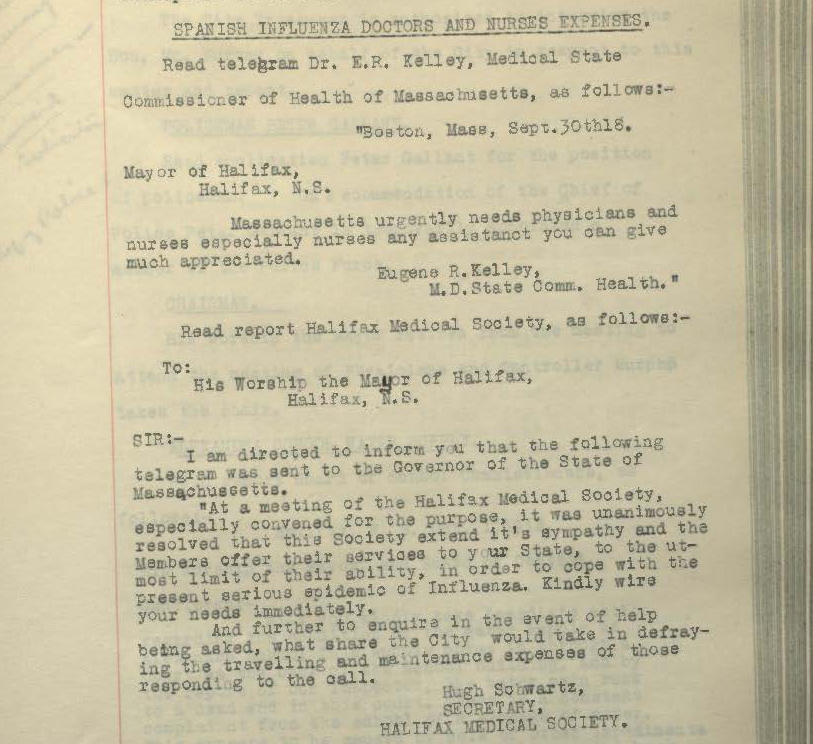
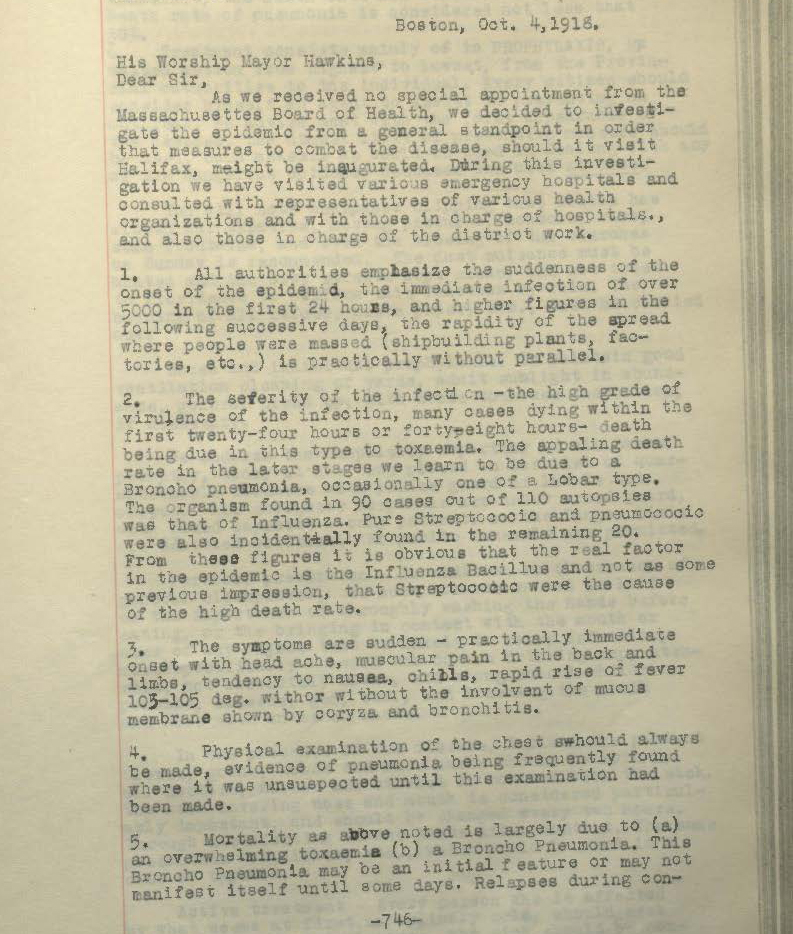
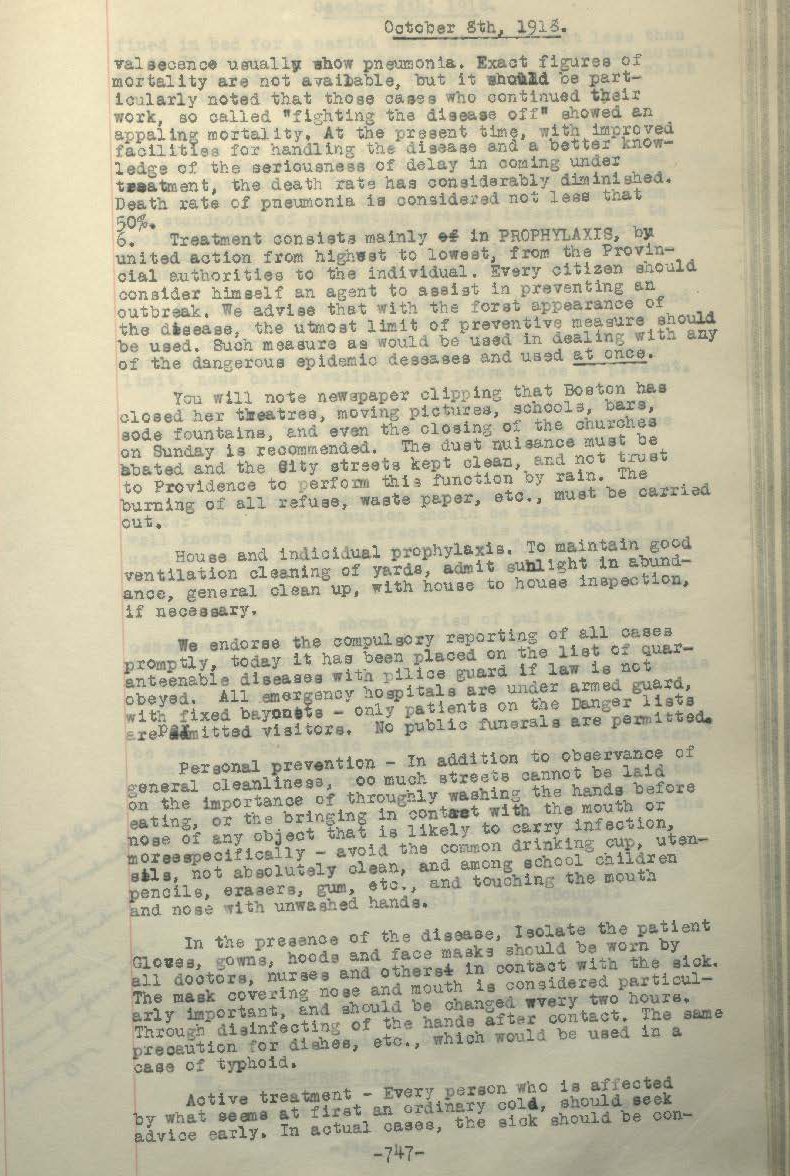
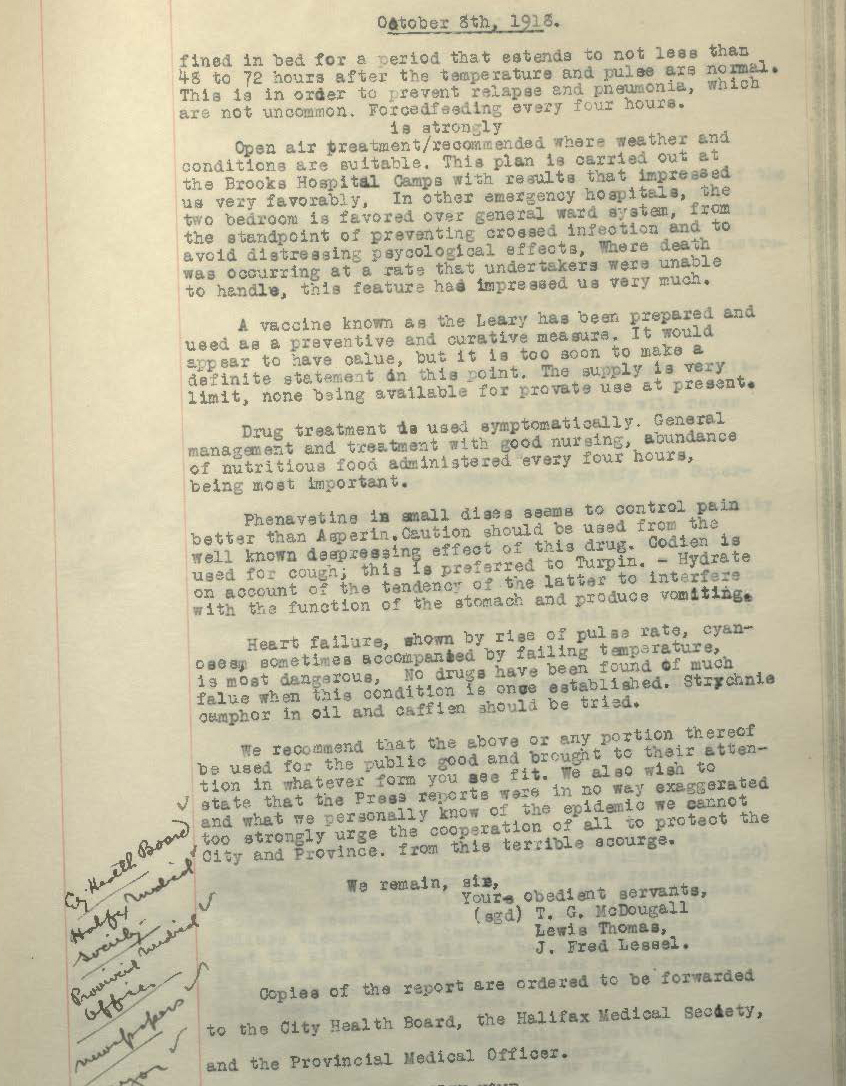

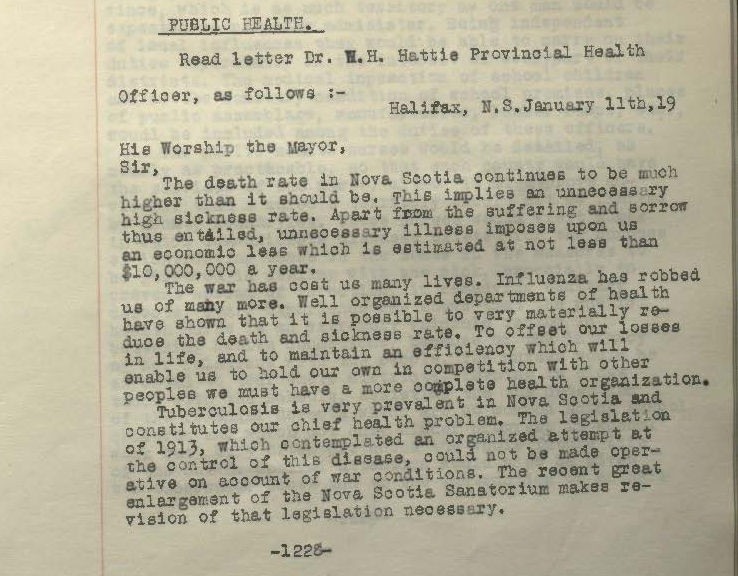

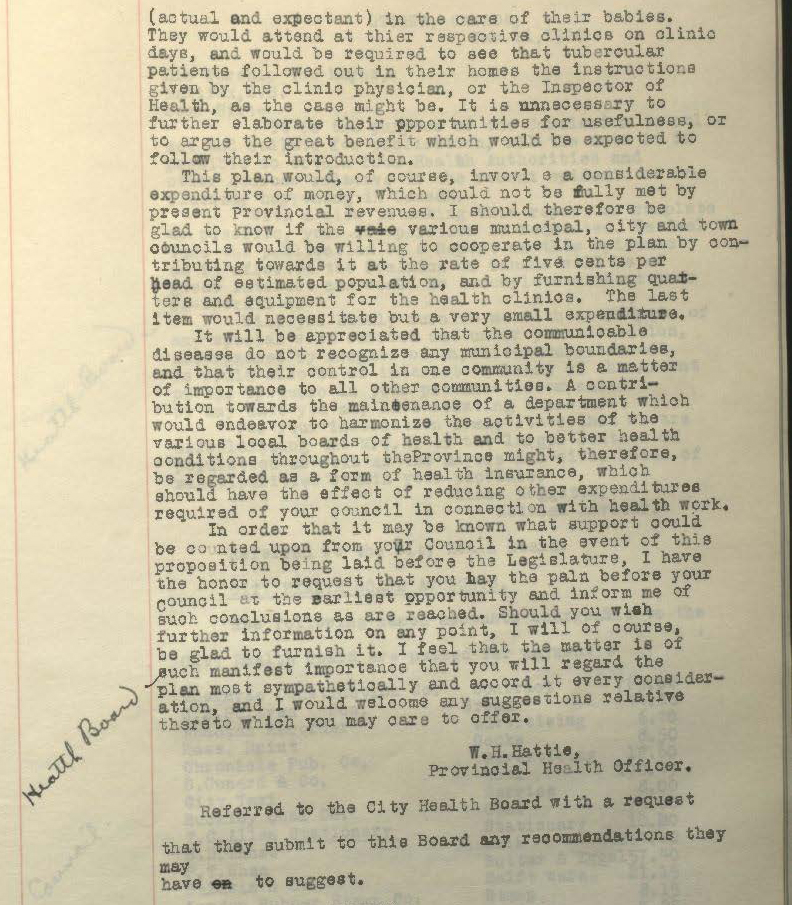

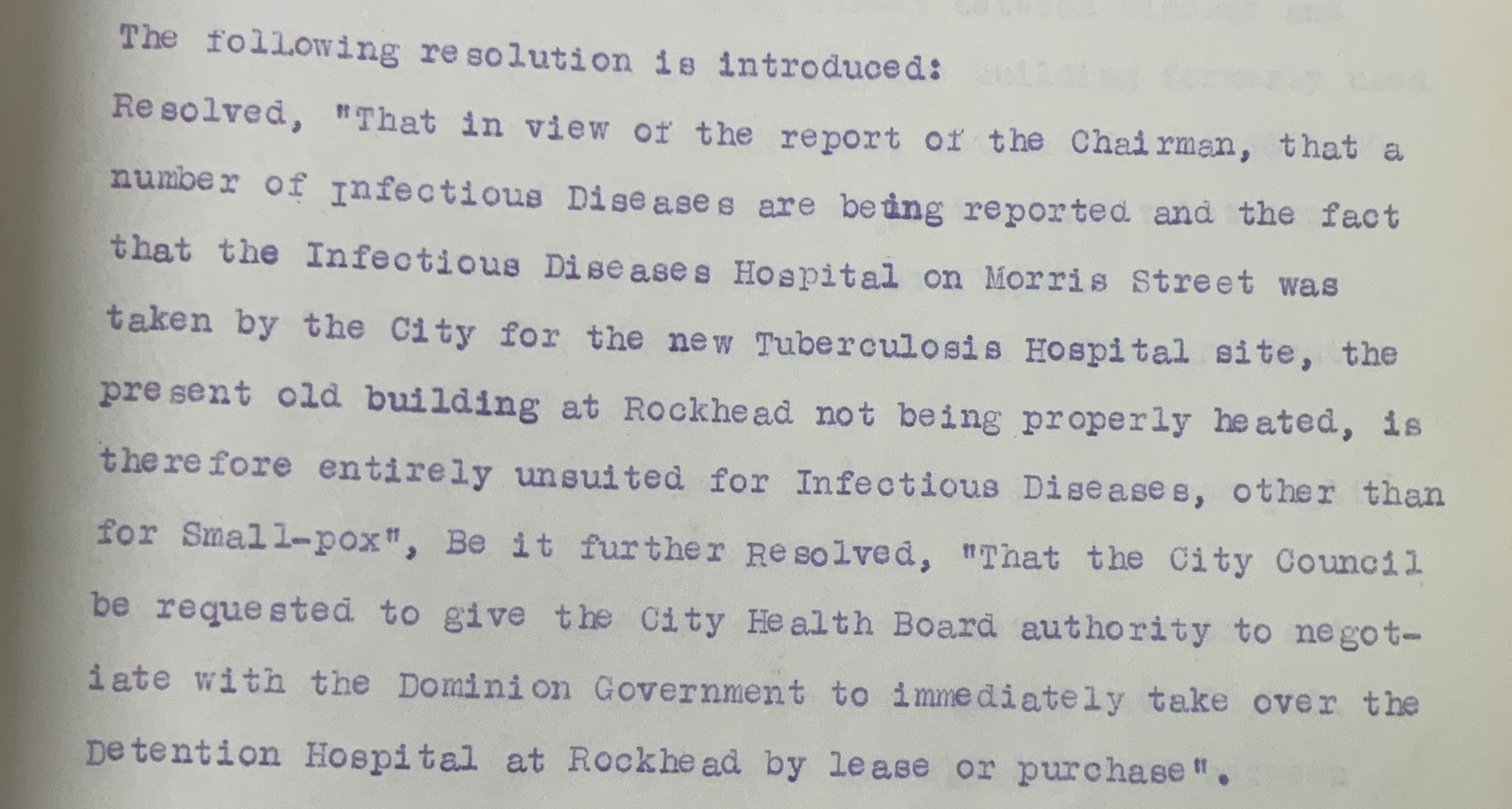



Add a comment to: Halifax Municipal Archives: Finding the Spanish Flu in Archival Records